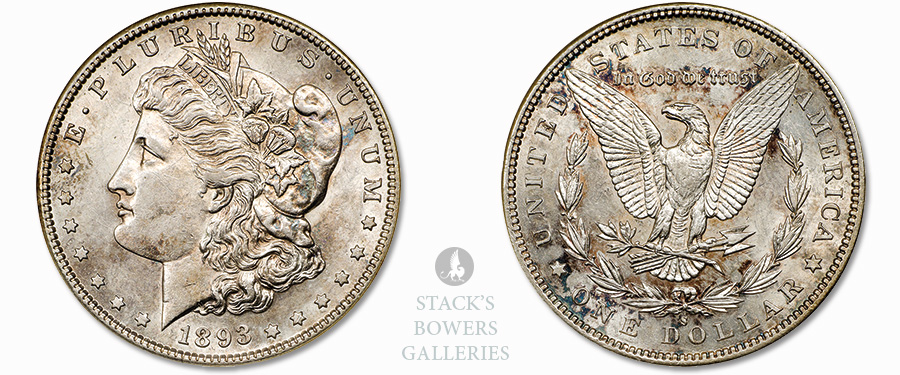
The title “King of Morgan Dollars” is a contested one. Many reserve the honor for the 1895 of which only Proof examples are thought to survive. But the 1893-S, especially in Mint State, is also a contender for the throne. Whichever you prefer, the two are titans of the rare mid-1890s Morgans. Stack’s Bowers Galleries is excited to offer an 1893-S graded AU-55 by NGC, in lot 3168 of our Spring 2023 Rarities Night Session. Any advanced Morgan dollar collector should take note, as higher-grade 1893-S Morgans are seldom offered.
The 1893 repeal of the 1890 Sherman Silver Purchase Act precipitated a drastic drop in Morgan dollar production. Many issues of the 1893-1895 period are rare, and while the 100,000 mintage of the 1893-S does not quite mark the low point of circulation strikes for the series, it represents the rarest collectible circulation strike issue (12,000 1895 Morgan dollars were reported as struck, but none are thought to survive).
Mint State 1893-S Morgans are highly desirable and fewer than 100 grading events for Mint State coins are reported in the PCGS and NGC censuses. In light of that, attractive examples in the About Uncirculated range absorb much collector demand.
NGC’s AU-55 grade places the example we’re offering solidly in the upper tiers of the service’s population; 26 other grading events for AU-55 pieces are recorded in the NGC Census, with fewer than 50 grading events for finer coins. AU pieces are more accessible, both in terms of population and price, than their Mint State counterparts, virtually ensuring robust bidding for the attractive example in our Spring auction. Per our cataloger, a close inspection of this example “reveals just a trace of light rub on the high points that hardly interferes with a sharply executed strike. Friction in the fields is also commensurate with the assigned grade, although plenty of flashy mint luster remains under a light. The surfaces are attractive in all regards, generally brilliant, but with mottled reddish-gold and powder blue highlights that are more pronounced on the reverse.”





